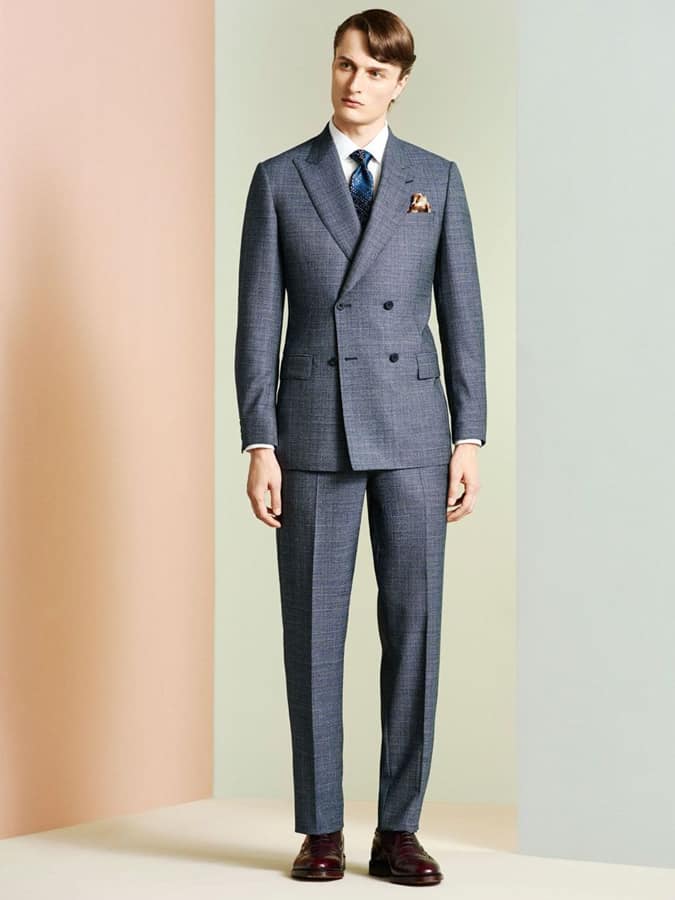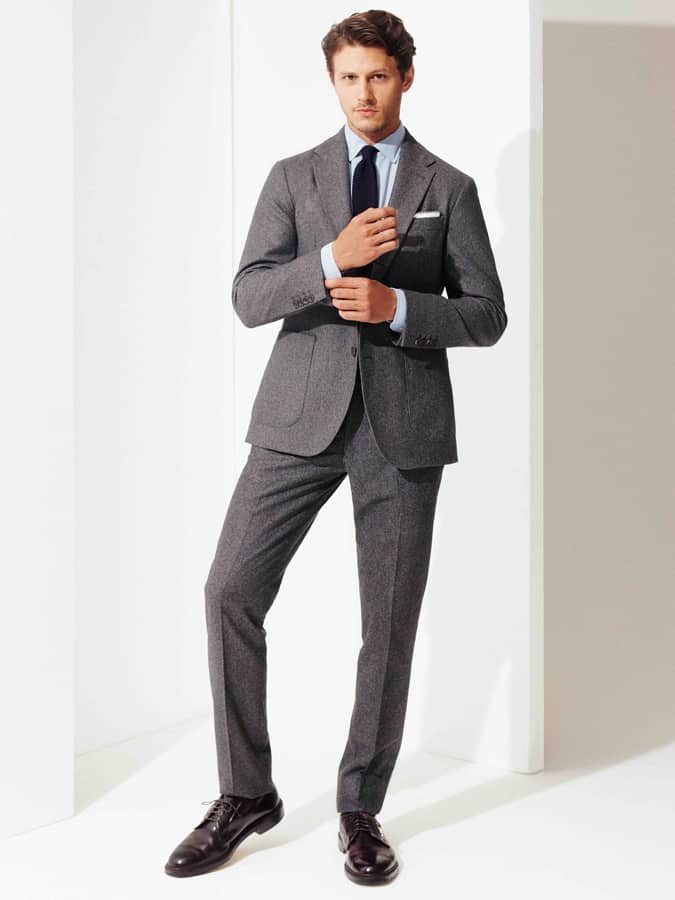An easier way to find an EU/IT jacket size is to add 10 to your UK/US size, e.g. a man with a 40” chest should order an EU 50 jacket. For trousers, add 8 to your UK/US size to get your EU size, or 16 to get your IT size (e.g. if you have a 32” waist, order an EU 40 or an IT 48).
3. Know Your Fit
“For something to look good and feel good, it simply has to fit,” says Chan“ When shopping online, it’s really important to look at photos closely and to read product descriptions carefully to see what they say about the fit of a suit, whether it’s slim, regular or classic for instance.” If you’re already in possession of a few suits, check the labels of one that you like. If not, here are the basics.
Skinny
The leanest of all fits, a skinny fit jacket will cut close around the chest and nip in at the waist, and will come with narrow tapered trousers. The best skinny fit suits are those that are simple: single breasted with one, two or three buttons and a narrow lapel. Generally, these work for men who are short or medium in height with a slim build.

Slim
A slim fit suit is the most versatile of all, with a jacket closely tailored to the body and straight, narrow trousers. It looks great in either a single or Double Breasted cut and is a better option for taller men who can look gangly in skinny fits, and for men of all heights who have a medium build.

Classic
Sometimes labelled regular, a classic fit suit is cut wide around the chest and hangs straight at the waist, with generously cut trousers for a more comfortable fit. Stockier men will find a regular fit more flattering, but should stick to a two-button single breasted cut to keep it contemporary.

Unstructured
Tailors traditionally use a layer of canvassing or fusing along with padding at the shoulders to give a jacket structure. An Unstructured blazer removes this rigidity and along with it much (but not all) of the formality, creating a softer garment that can be dressed up or down depending on the occasion.

4. Fabric Choice
The look and feel of a suit is perhaps the trickiest thing to gauge when shopping online – how a fabric photographs under bright studio lighting isn’t necessarily how it’s going to look out in real life. “It’s also important to consider that a heavy winter fabric might have a very different feel to it than a light summer fabric, even if the measurements are pretty much the same,” adds Chan.
Wool: The traditional choice for tailoring, wool is soft, breathable and, if looked after, wears well with time. Look for a mid-weight wool (around 11-12 oz) which can be worn all year round whatever the occasion.
Cotton: Ideal for spring weddings, cotton suits are among the lightest and most breathable but have little stretch, meaning they’re at their best when cut in a relaxed fit.
Linen: The most lightweight of all suit fabrics, linen is great for the warmer months but does have a tendency to crease easily. An unstructured linen is perfect for smart-casual dress codes, with structured linen-wool or linen-cotton blends working well for formal occasions.
Polyester: Any sub-£150 suit will likely be made of 100 per cent polyester. A synthetic fibre (and therefore the least sustainable option), polyester doesn’t breathe in the way that natural cloths do, meaning suits from House of Cavani and Harry Brown can leave you sweaty and uncomfortable.
Between this and its tendency to turn shiny with wear, it’s best to avoid where possible, though polyester-wool or polyester-cotton blends from brands such as Marc Darcy and Gibson are good value alternatives.


